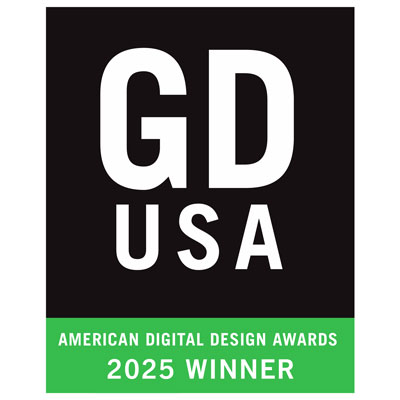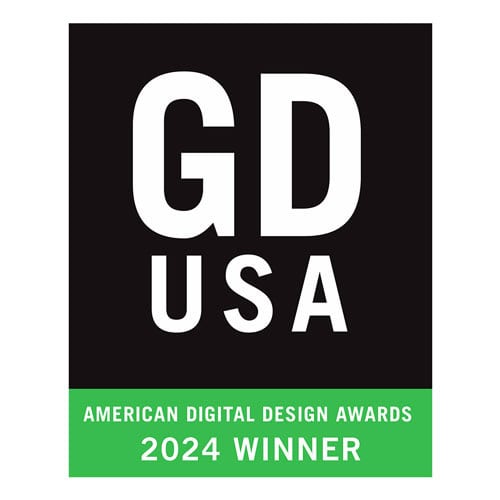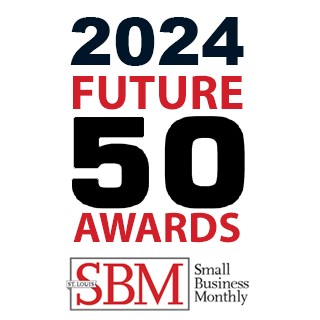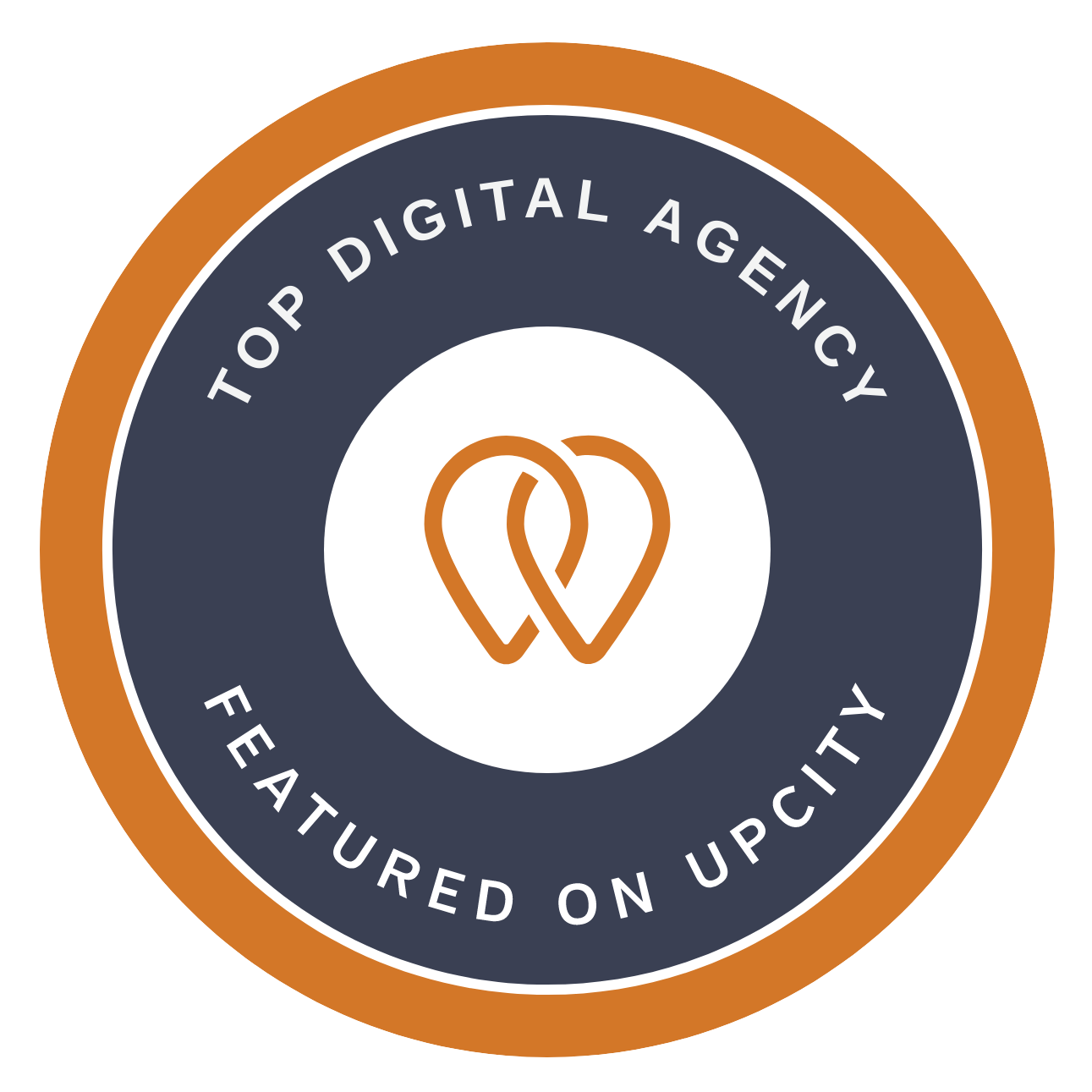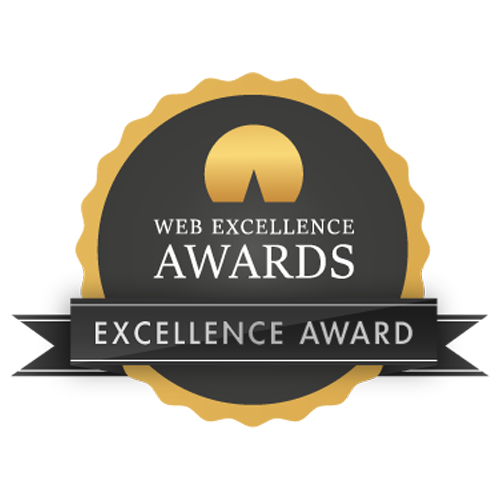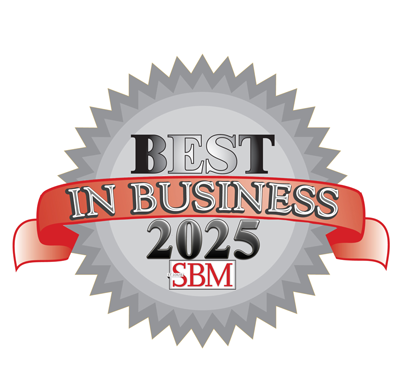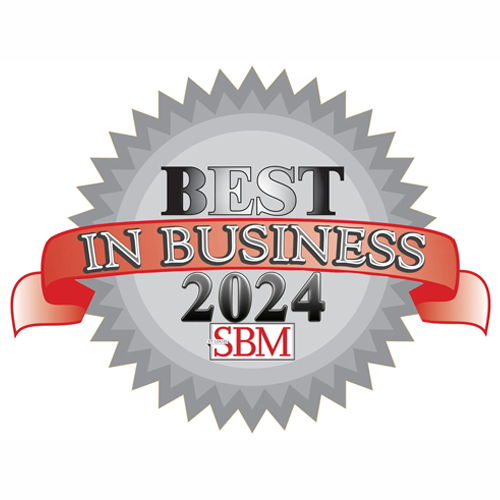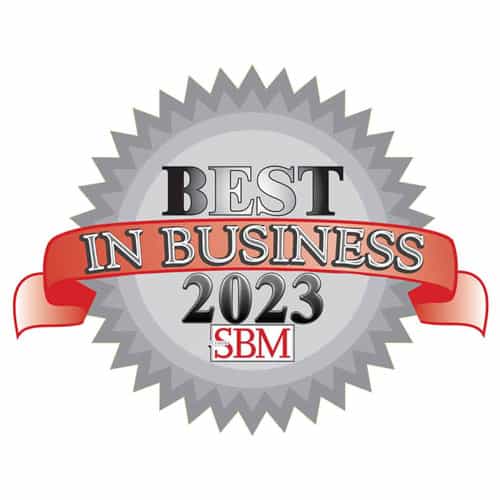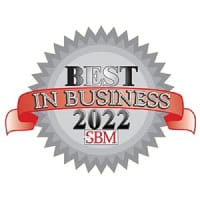As we move into March 2025, marketing continues to evolve with rapid advancements in technology, changing consumer behaviors, and new industry standards. This month, we’re seeing significant shifts in AI-driven content, social commerce, and data privacy, among other key trends. Let’s dive into the most important updates and events shaping the marketing landscape this month, including the latest March 2025 marketing news.
March 2025 Marketing News: Trends & Insights
AI-Powered Content Creation & Personalization
This section highlights the latest March 2025 marketing news and how it impacts businesses moving forward.
AI-driven tools are now an integral part of content marketing strategies. Brands are using AI to generate hyper-personalized ad creatives, automate copywriting, and optimize customer interactions. These tools help companies create more effective campaigns while maintaining brand consistency and audience engagement, further influenced by the latest March 2025 marketing news.
Short-Form Video Dominance
With platforms like TikTok, Instagram Reels, and YouTube Shorts continuing to dominate, short-form video remains the most engaging content format. Brands are focusing on snappy, visually compelling narratives to capture attention quickly and drive conversions.
Social Commerce Expansion
Shopping within social platforms is no longer a novelty—it’s a core part of eCommerce. TikTok, Instagram, and YouTube are refining their in-app shopping experiences, integrating AI-powered recommendations to improve conversion rates and customer retention.
Voice Search Optimization
As voice search adoption grows, brands are optimizing their content to align with how people naturally speak. SEO strategies now include long-tail, conversational queries to ensure visibility across voice assistants like Alexa, Google Assistant, and Siri.
Influencer Marketing Evolution
Brands are shifting their focus from celebrity influencers to micro and nano-influencers. These smaller influencers have stronger audience connections, leading to higher engagement and more authentic interactions with brands.
Omnichannel Marketing Strategies
Seamless customer experiences across digital and physical touchpoints are more important than ever. Companies are refining their omnichannel strategies to provide a consistent brand experience, whether through social media, email, in-store interactions, or customer service chatbots.
Augmented & Virtual Reality Integration
AR and VR technologies are being leveraged to create immersive brand experiences. From virtual try-ons to interactive product demos, brands are using these tools to deepen engagement and drive purchasing decisions.
Data Privacy and Security Emphasis
With increasing regulations on data privacy, brands are focusing on transparency and ethical data collection. First-party data strategies are becoming essential as companies shift away from reliance on third-party cookies.
Sustainability and Ethical Marketing
Consumers expect brands to demonstrate genuine commitment to sustainability and ethical business practices. Greenwashing is no longer acceptable—companies must back their claims with tangible actions and transparent reporting.
AI-Driven Advertising Innovation
AI is reshaping digital advertising, from real-time content generation to hyper-personalized ad targeting. Expect to see more brands using AI to enhance creative execution, optimize ad spend, and drive better campaign performance.
Our Take
March 2025’s marketing trends highlight a dynamic balance between cutting-edge technology and human-centric strategies. AI is revolutionizing content personalization and advertising, but brands must remain authentic and privacy-conscious. Short-form video continues to be the most effective medium for engagement, while social commerce and omnichannel marketing are reshaping the customer journey.
Meanwhile, the shift toward influencer authenticity and ethical marketing underscores the need for brands to build deeper trust with consumers. Transparency, sustainability, and privacy-first data strategies will define success in the months ahead.
The key takeaway? Brands that integrate AI and digital innovations while prioritizing authenticity, ethical responsibility, and consumer trust will stand out in this competitive landscape.
March 2025 Marketing Events
SXSW (South by Southwest)
📅 When: March 7–15, 2025
📍 Where: Austin, Texas
🎯 Focus: Interactive media, branding, and marketing innovation
📌 Features: Networking opportunities, keynote speakers, and emerging technology showcases
Adobe Summit – The Digital Experience Conference
📅 When: March 18–20, 2025
📍 Where: Las Vegas, Nevada (and online)
🎯 Focus: Digital marketing, AI in advertising, and customer experience
📌 Features: Hands-on labs, industry leader panels, and AI-driven marketing insights
Digital Summit Tampa
📅 When: March 25–26, 2025
📍 Where: Tampa, Florida
🎯 Focus: Digital marketing strategies and innovations
📌 Features: SEO, content marketing, emerging trends, and networking sessions
The MarTech Summit: Berlin
📅 When: March 5, 2025
📍 Where: Berlin, Germany
🎯 Focus: Marketing technology trends and strategies
📌 Features: Industry leaders, case studies, and panel discussions on AI-driven marketing tools
Marketing, PR & Development Council Conference 2025
📅 When: March 23–26, 2025
📍 Where: Austin, Texas
🎯 Focus: Marketing, public relations, and development strategies
📌 Features: Expert insights, interactive workshops, and networking opportunities
For more insights and updates, follow Seafoam on LinkedIn. Need help navigating the evolving marketing landscape? Contact us to explore strategies that will help your business thrive in 2025 and beyond.
Prepared for: Business Owners, CEOs, Presidents, and Marketing Directors in the St. Louis region
Prepared by: Seafoam Marketing – A St. Louis Marketing Agency
Table of Contents
Introduction
In 2025, the St. Louis marketing landscape has entered a new era defined by rapid digital growth and evolving local consumer behaviors. With deep roots and years of experience in St. Louis, we’ve witnessed firsthand the shift from an era of billboard campaigns and print ads to one dominated by social media, search engines, and data-driven strategy. The COVID-19 pandemic was a pivotal accelerant of this change – forcing businesses in every industry to adapt almost overnight. What follows is an in-depth exploration of how St. Louis businesses are navigating this “new normal” in marketing, balancing the city’s proud local culture with the vast opportunities of the digital world.
Each section of this report delves into a key theme shaping our region’s marketing environment in 2025. You’ll find data from reliable sources, local examples, and insights drawn from years of marketing expertise. Our aim is to provide clarity and guidance – in plain language – on what these trends mean for you as business leaders, and how you can leverage them. From permanent post-pandemic transformations to budget benchmarks, creative economy influences, and the rise of AI, this report serves as a roadmap to the digital horizons ahead for St. Louis marketing.
Let’s begin by looking at how local industries have permanently changed their marketing strategies in the wake of the pandemic.
Post-Pandemic Digital Transformation in St. Louis Industries
The COVID-19 pandemic upended “business as usual” and, in many ways, permanently reshaped how St. Louis companies reach their customers. In the early months of 2020, storefronts went dark and in-person events were canceled, but consumer demand didn’t vanish – it moved online. St. Louis businesses, from retail and restaurants to B2B manufacturers, responded by accelerating their digital transformation at an unprecedented pace. Many of these changes have proven to be lasting. In this section, we examine what that transformation looks like across industries and how our local trends compare to national averages.
The Local-Digital Divide
One unique challenge for St. Louis businesses is balancing our strong sense of local community with the vast reach of digital channels. St. Louis has a proud, hyper-local culture – think neighborhood loyalty, Cardinals baseball traditions, 314 Day celebrations – and historically, a lot of marketing here has been very community-centric (sponsoring the local little league, ads on the local radio, flyers at the corner cafe). At the same time, digital marketing lets even a small St. Louis company have a national or global audience at its fingertips. This creates a kind of “local-digital divide”: how do you stay authentic and connected to St. Louis roots while also capitalizing on online scale? In this section, we analyze how businesses are bridging that divide, blending traditional St. Louis marketing approaches with modern digital tactics.

St. Louis Marketing Budget Allocation Benchmarks
One of the most common questions we get from executives is: “How should we be allocating our marketing budget these days, and how do we compare with others in St. Louis?” This section tackles that question by looking at benchmarks for marketing spend. We’ll explore how businesses of different sizes and industries in the St. Louis area are divvying up their marketing dollars across channels, and how that aligns with what’s happening nationally. We’ll also compare the ROI (return on investment) of traditional channels versus digital channels, especially in the context of our local market. The goal is to give you a frame of reference – a check on whether you are under-investing or over-investing in certain areas, and which channels tend to deliver the best bang for the buck in St. Louis.
The Emerging St. Louis Creative Economy
St. Louis has always had a creative undercurrent – from our rich music history (hello, blues and jazz) to a vibrant arts scene and a tradition of scrappy advertising agencies punching above their weight. In 2025, this creative economy is both a source of marketing firepower and a factor influenced by broader trends like talent migration. In this section, we’ll explore how the local creative talent pool is evolving (e.g., are we experiencing a brain drain or a creative influx?), and how St. Louis’s unique cultural assets are influencing brand storytelling. Essentially, we want to understand the people and cultural context behind the marketing – the designers, writers, videographers, and storytellers in St. Louis – and what that means for businesses crafting their brand narratives.
AI Adoption in St. Louis Marketing
No 2025 marketing report would be complete without discussing artificial intelligence. AI has rapidly moved from a buzzword to a practical toolkit for marketers. In St. Louis, we’re seeing companies of all sizes dabble in AI – from using AI to automate routine tasks to leveraging data-driven insights that inform strategy. This section looks at how widely AI is being adopted in the local marketing scene, differences between big and small businesses in implementation, and some real-world applications tailored to St. Louis market challenges.
Conclusion
The St. Louis marketing landscape of 2025 is a dynamic blend of old and new, local and global, human and AI. We’ve traversed through how the pandemic permanently altered marketing strategies, catapulting even the most traditional businesses into digital channels. We examined the art of balancing tight-knit community marketing with the boundless reach of online platforms – a balance many St. Louis businesses are mastering through integrated campaigns that feel personal yet scale broadly. We dissected where the marketing dollars are flowing, noting the decisive tilt toward digital spend and the superior ROI those channels tend to deliver, especially when leveraged with the creativity and authenticity that characterize successful St. Louis campaigns. We also celebrated the creative economy that underpins our marketing efforts – the people and cultural narratives that give St. Louis marketing its soul – while acknowledging the importance of nurturing and retaining talent to keep that engine running. And finally, we peered into the fast-emerging world of AI in marketing, seeing how local firms are using it pragmatically to work smarter and meet the evolving expectations of consumers.
A few key takeaways for business leaders emerge from this report:
- Digital is Non-Negotiable: The digital transformation is here to stay. Consumers have grown accustomed to the convenience and personalization it offers. St. Louis businesses that invested in robust digital marketing during the pandemic are reaping the rewards, and those late to the game should catch up fast. This doesn’t mean abandoning all traditional methods, but it does mean ensuring your website, social media, search presence, and online customer experience are as strong as your in-person handshake.
- Stay Local, Even as You Go Digital: The local-digital divide can be bridged with a thoughtful approach. Use the rich tapestry of St. Louis culture to inform your content and campaigns. Engage with community events and translate that engagement online. Customers here love to see their city reflected in marketing – it creates trust and goodwill. Being digital-first doesn’t mean losing your local identity; if anything, it gives you new ways to express it.
- Mind Your Marketing Mix: Regularly revisit your budget allocations. The benchmarks suggest more dollars shifting to digital, but the right mix depends on your audience. Track ROI from all channels – if a traditional channel still works for you, great, but be sure it’s pulling its weight. Embrace the measurability of digital to keep optimizing. The data is clear that channels like email, social, and content marketing can drive tremendous returns, so ensure those areas are well-funded and well-executed.
- Leverage the Creative Ecosystem: St. Louis has a wealth of creative talent and a unique story. Collaborate with local creatives, be it agencies, freelancers, or artists, to craft campaigns that stand out. Invest in your team’s development to keep skills here. Maybe consider partnerships with local universities or coding bootcamps to create a pipeline of digital marketing talent. The stronger our creative community, the more innovative and resonant our marketing can be.
- Adopt AI Thoughtfully: Don’t fear artificial intelligence; figure out how to harness it for your needs. Start small – maybe use an AI tool to analyze last quarter’s marketing results or to draft some ad copy variations. Experiment, as many others are doing, and find the 10-20% efficiency gains here and there. Those add up. But also set guidelines so that AI is a help, not a hindrance – maintain human oversight to keep messages on-brand and empathetic. Think of AI as your new intern or assistant: capable, quick, but needing direction from your seasoned perspective.
As we navigate this landscape, one thing remains clear: the fundamentals of good marketing still apply. Know your audience, offer genuine value, tell a compelling story, and build relationships. The channels and tools have evolved – and will continue to evolve – but these principles are our north star. St. Louis companies that adhere to them, while adapting to change, are finding success. A local business that responds to an online customer inquiry with the same care as if that person walked into the store is going to win fans. A CEO who allocates budget not just to the trendiest tactic, but to what aligns with their strategy and customer behavior, is going to see results.
Seafoam Media has been privileged to ride the waves of change in marketing over the decades, from the rise of the internet to the mobile revolution to now AI and beyond. Through it all, our mission has been to guide businesses with expertise and empathy – cutting through hype, focusing on clarity and results. We hope this report has armed you with knowledge and insight that feels actionable and relevant. The 2025 horizon is bright with opportunity for those willing to innovate and stay true to their brand’s character.
In closing, remember that St. Louis’ marketing landscape is as rich and robust as the city itself. It’s a landscape shaped by resilience (forged in post-pandemic adaptation), by community spirit (the glue that binds local loyalty), by creativity (the spark that makes campaigns memorable), and by innovation (the engine propelling us forward). As you chart your course in this landscape, lean on those strengths. Embrace the digital future, but bring your St. Louis values with you. In doing so, you’ll not only achieve greater marketing success – you’ll strengthen the bond between your business and the community it serves. And that is a horizon worth aiming for.
February 2025 Marketing News & Happenings:
- AI-Driven Creative Development: AI tools are becoming standard for content generation and refinement, enabling sophisticated personalization and dynamic ad creation. Marketers are leveraging these technologies to optimize messaging while maintaining creative integrity.
- Rise of Micro-Influencers: Brands are discovering greater value in partnerships with smaller, more focused influencers who maintain stronger connections with specific communities. These authentic voices often generate higher engagement rates than celebrity endorsements.
- First-Party Data Strategy: As third-party cookies phase out, organizations are developing sophisticated first-party data collection methods. This shift emphasizes transparency and privacy-first approaches in customer data management.
- Authenticity in Content: User-generated content continues to outperform traditional polished advertising. Raw, genuine customer testimonials and organic content are driving stronger audience connections and trust.
- Hybrid Experience Integration: The line between digital and physical customer experiences continues to blur. Brands are using AR and VR technologies to create seamless interactions across all touchpoints.
- Social Commerce Maturation: Social platforms have evolved into robust shopping destinations. AI-powered recommendation systems on TikTok, Instagram, and YouTube are driving improved conversion rates.
- Conversational Marketing Growth: Advanced chatbots and AI-driven messaging systems are transforming customer service. Real-time engagement through various messaging platforms is becoming standard practice.
- Short-Form Content Dominance: Platforms focusing on brief, engaging content like TikTok and Instagram Reels continue to lead engagement metrics. Ephemeral content maintains its strong appeal among audiences.
- CTV Advertising Expansion: As traditional TV advertising declines, brands are increasing investment in programmatic streaming ads. Personalized targeting on major streaming platforms shows promising results.
- Luxury Market Adaptation: High-end brands are emphasizing craftsmanship and sustainability while enhancing direct customer engagement through personalized experiences and VIP events.
- Omnichannel Integration: Organizations are creating cohesive customer journeys across all platforms, using AI to predict behavior and optimize interactions at every touchpoint.
- Ethical Marketing Evolution: Consumer expectations for genuine corporate responsibility are rising. Brands must demonstrate authentic commitment to sustainability and social issues beyond surface-level claims.
Our Take:
The February 2025 marketing news reflects a sophisticated balance between technological advancement and human connection. AI's integration into creative processes marks a significant shift in how marketing teams operate, while the rise of micro-influencers signals a return to more intimate, community-focused engagement.
The emphasis on first-party data and privacy compliance demonstrates the industry's maturation in handling customer information. This evolution coincides with a broader shift toward authenticity, as seen in the success of user-generated content and raw, unpolished messaging.
Social commerce and conversational marketing continue to reshape how brands interact with customers. These channels, enhanced by AI capabilities, create more natural, responsive purchasing experiences. Meanwhile, the surge in CTV advertising represents a significant shift in how brands reach audiences through entertainment platforms.
The luxury sector's adaptation to economic conditions through enhanced personal experiences and sustainability focus reflects broader industry trends toward meaningful customer connections. Similarly, the imperative for genuine ethical marketing practices indicates a deeper understanding of modern consumer values.
Looking ahead, success will likely favor those who can effectively combine technological capabilities with authentic human elements, creating experiences that resonate on both practical and emotional levels.
February 2025 Marketing Events:
- Affiliate Summit West
- When: February 3-5, 2025
- Where: Las Vegas, Nevada
- Focus: Affiliate marketing strategies and networking
- Features: Industry leader insights and future trends
- Product Marketing Summit Austin
- When: February 11-12, 2025
- Where: Austin, Texas
- Focus: Product marketing case studies and best practices
- Features: Positioning, messaging, and go-to-market strategies
- Future of Marketing Leadership Conference
- When: February 12-13, 2025
- Where: New York, New York
- Focus: Modern marketing competencies and education
- Features: Industry-academia collaboration and practical insights
- Second Wind Conference
- When: February 13-14, 2025
- Where: Lake Buena Vista, Florida
- Focus: Small agency management and growth
- Features: Creative processes and client relationship strategies
- B2B Marketing Exchange
- When: February 24-26, 2025
- Where: Scottsdale, Arizona
- Focus: B2B marketing and demand generation
- Features: Account-based marketing insights
- eTail West
- When: February 24-27, 2025
- Where: Palm Springs, California
- Focus: eCommerce and digital marketing
- Features: Online retail trends and innovations
For more insights and updates, follow Seafoam on LinkedIn. Contact us to discuss how we can help you navigate the evolving marketing landscape and achieve your growth goals.
January 2025 Marketing News & Happenings:
- AI-Driven Personalization Advances: Artificial intelligence continues to revolutionize marketing through hyper-personalized experiences. By analyzing complex patterns in browsing behavior, purchase history, and customer interactions, AI systems now craft individualized content that resonates with specific audience segments. Major brands report significant improvements in engagement rates and customer loyalty through these targeted approaches.
- Voice Search Optimization: The mainstream adoption of smart speakers and voice-activated devices is fundamentally changing search behavior. Brands are adapting their content strategies to optimize for natural language queries, focusing on conversational keywords and question-based content. This shift reflects the growing importance of voice-first experiences in the customer journey.
- AR/VR Transform Shopping: Major retailers like IKEA and Sephora are setting new standards in immersive shopping experiences. Through augmented and virtual reality implementations, customers can now visualize products in their own spaces or try them virtually before purchase. These technologies are showing promising results in reducing return rates and increasing customer confidence in online purchases.
- Social Commerce Evolution: Platforms like TikTok and Instagram have evolved beyond social networking to become significant shopping destinations. New features enable seamless in-app purchases, while advanced algorithms create personalized shopping feeds. This integration of social interaction and commerce is reshaping how consumers discover and purchase products.
- Trust-Based Marketing: In response to growing consumer skepticism, brands are prioritizing authenticity in their marketing approaches. User-generated content, transparent business practices, and genuine customer testimonials are becoming central to marketing strategies. Companies are finding that building trust through honest communication leads to stronger, more lasting customer relationships.
- Sports Marketing Diversification: The marketing landscape is expanding into new territory with emerging sports leagues and women's sports. Brands are discovering valuable opportunities in these previously underserved markets, targeting passionate fan bases through strategic sponsorships and partnerships. This diversification is opening up new channels for authentic audience engagement.
- Advanced AI Customer Service: Digital assistants and AI-driven chatbots have evolved to provide sophisticated, personalized support. These systems now handle complex inquiries with natural language processing and emotional intelligence, offering real-time assistance that rivals human support in many scenarios. Companies report significant improvements in customer satisfaction and response times.
- Ethical AI and Privacy: Organizations are taking a proactive stance on data privacy and ethical AI use. This includes implementing transparent data collection practices, clear opt-in processes, and responsible AI deployment. Companies are finding that strong ethical practices not only comply with regulations but also build stronger customer trust and loyalty.
- Quality Over Quantity: In response to digital fatigue, brands are prioritizing meaningful engagements over high-volume content distribution. This approach focuses on creating valuable, personalized experiences that resonate with specific audience segments. Companies report stronger engagement metrics and improved customer retention through this more focused strategy.
- Real-Time Brand Monitoring: CMOs are leveraging advanced AI-powered systems for proactive reputation management. These tools provide instant insights into public discussions, competitor activities, and brand sentiment across multiple channels. This real-time monitoring enables swift responses to emerging issues and opportunities, helping brands maintain and enhance their market position.
Our Take:
The start of 2025 brings a distinct convergence of technological advancement and human-centered marketing approaches. AI continues its transformation of the industry, but with a notably more nuanced implementation focused on enhancing rather than replacing human interactions.
The evolution of voice search and AR/VR technology signals a shift in how consumers discover and interact with brands. These emerging channels create opportunities for more intuitive, immersive customer experiences, while requiring marketers to adapt their strategies accordingly.
Social commerce's rapid growth reflects changing consumer behaviors, with platforms like TikTok and Instagram bridging the gap between social interaction and purchasing decisions. Meanwhile, the emphasis on trust and authenticity underscores the enduring importance of genuine connections in an increasingly digital world.
The expansion into diverse sports markets and the focus on meaningful engagements demonstrate the value of reaching specific audiences with relevant, impactful content. This targeted approach, combined with real-time brand monitoring, enables more responsive and effective marketing strategies.
Looking ahead, success will likely favor those who can balance technological innovation with authentic human connection, creating experiences that resonate on both practical and emotional levels.
January 2025 Marketing Events:
- Lead Generation World Conference 2025
- When: January 5-7, 2025
- Where: Hollywood, Florida
- Focus: Lead generation, customer acquisition, and conversion strategies
- Features: Immersive sessions and expert insights for campaign optimization
- NRF 2025: Retail's Big Show
- When: January 12-14, 2025
- Where: New York City, New York
- Focus: Retail technologies and marketing strategies
- Features: Keynote speeches, interactive sessions, and innovative retail solutions
- Traffic & Conversion Summit 2025
- When: January 14-16, 2025
- Where: Las Vegas, Nevada
- Focus: Digital marketing and conversion optimization
- Features: Practical insights on SEO, paid media, email marketing, and social media
- Advanced Email Conference
- When: January 23, 2025
- Where: Manchester, United Kingdom
- Focus: Email marketing strategies and best practices
- Features: Real-world use cases and actionable strategies
- Rev2025
- When: January 28-30, 2025
- Where: Online
- Focus: Revenue optimization and growth strategies
- Features: In-depth discussions on marketing strategies and web analytics
For more insights and updates, follow Seafoam on LinkedIn. Contact us to discuss how we can help you navigate the evolving marketing landscape and achieve your growth goals.
The marketing landscape is evolving at a dizzying pace. After decades of helping businesses navigate these changes, we've learned that while nobody can predict the future with certainty, we can identify the key marketing trends for 2025 that will shape where the industry is heading.
In this article, we'll explore the top marketing trends for 2025. Rather than chasing fleeting tactics, we'll focus on sustainable approaches that can transform your marketing and drive lasting growth.
The Rise of Authentic, AI-Enhanced Personalization
The conversation around AI in marketing is shifting from automation to amplification. While AI tools are becoming more sophisticated at analyzing customer data and predicting behavior, the real breakthrough is how brands are using this technology to create more genuine, human connections.
Successful companies in 2025 won't just use AI to automate their marketing—they'll use it to understand their customers more deeply and deliver truly personalized experiences that feel authentic rather than automated. This means moving beyond basic demographic targeting to consider the full context of customer interactions, preferences, and needs.
The key difference between current personalization efforts and what we'll see in 2025 is the sophistication of the underlying systems. Instead of simple "if-then" rules, AI will help create dynamic content experiences that evolve with each customer interaction. However, the most successful brands will be those that use this technology to enhance rather than replace human creativity and strategic thinking.
What this means for your business:
- Invest in robust data collection and management systems that can feed AI-powered personalization tools
- Create content frameworks that allow for dynamic personalization while maintaining brand consistency
- Develop clear guidelines for when to use AI and when to prioritize human interaction
- Focus on collecting and analyzing first-party data to understand your customers better
- Build systems that can adapt to changing privacy regulations and customer expectations
The Evolution of Video Marketing
Short-form video isn't just trending—it's transforming how brands connect with their audiences. But the real story isn't about video length; it's about creating meaningful moments that resonate with viewers, regardless of format.
We're seeing businesses succeed by developing video strategies that balance quick, engaging content for platforms like TikTok and Instagram with longer, more detailed pieces that showcase their expertise and build trust. The key is understanding which format serves your message best.
By 2025, we expect to see a more sophisticated approach to video marketing that includes:
- Integrated video strategies that span multiple platforms and formats
- AI-powered video personalization that adapts content based on viewer behavior
- Enhanced analytics that help brands understand and optimize video performance
- Seamless integration of video content into overall marketing frameworks
- Strategic use of both short-form and long-form content to serve different audience needs
How to adapt:
- Start by auditing your current video content and identifying gaps in your strategy
- Invest in tools and training that help your team create professional-quality video content
- Develop clear guidelines for video content that align with your brand standards
- Create a content calendar that balances different video formats and purposes
- Build measurement systems that track video performance across platforms
The Shift to Position-less Marketing
Traditional marketing roles are evolving into more fluid positions that require a broader skill set. This isn't just about wearing multiple hats—it's about understanding how different marketing functions work together to create cohesive customer experiences.
Smart businesses are building marketing frameworks that allow their teams to adapt quickly while maintaining consistent brand standards and messaging. This approach creates more resilient marketing systems that can evolve with changing technology and customer needs.
The successful marketing team of 2025 will:
- Embrace continuous learning and skill development
- Use AI tools to automate routine tasks and focus on strategic thinking
- Develop cross-functional expertise while maintaining specialization where needed
- Create systems and processes that support flexible role definitions
- Foster collaboration and knowledge sharing across traditional department boundaries
Trust as a Cornerstone of Marketing Success
In an era of AI-generated content and virtual experiences, authentic human connections are becoming more valuable than ever. Brands that build trust through transparent communication and consistent delivery of value will stand out in an increasingly crowded digital landscape.
This trend goes beyond surface-level authenticity—it's about creating genuine connections with your audience through:
- Clear, honest communication about your products and services
- Consistent delivery on brand promises
- Active engagement with customer feedback and concerns
- Transparent business practices that align with customer values
- Regular demonstration of expertise and thought leadership
Building trust in 2025 will require:
- Creating content that showcases real expertise and experience
- Developing clear processes for managing and responding to customer feedback
- Building systems that ensure consistent delivery of brand promises
- Maintaining transparency in business practices and communication
- Investing in long-term relationship building over quick wins
The Integration of Sustainability and Social Responsibility
Environmental consciousness and social responsibility are no longer optional—they're essential components of successful marketing strategies. However, the focus is shifting from performative activism to genuine, sustainable business practices that create positive impact.
Successful brands in 2025 will:
- Integrate sustainable practices throughout their operations
- Communicate their environmental and social initiatives clearly and honestly
- Back up statements with measurable actions and transparent reporting
- Focus on long-term impact over short-term gains
- Build partnerships that advance sustainability goals
This shift requires:
- Developing clear sustainability goals and metrics
- Creating transparent reporting systems
- Building authentic community partnerships
- Integrating sustainable practices into all aspects of business
- Communicating progress and challenges honestly
The Rise of AI-Powered Search
The search landscape is undergoing a fundamental transformation. Traditional search engines are evolving to incorporate AI-generated overviews and summaries, while new AI-powered search platforms are emerging to challenge the status quo. This shift is changing not just how people search, but how they consume and interact with content.
By 2025, we expect to see:
- AI-powered search tools providing more conversational, personalized results
- Increased emphasis on entity relationships over traditional keywords
- Growth in zero-click searches as AI delivers immediate answers
- Multi-modal search combining text, voice, and visual inputs
- Greater importance of brand authority and authentic expertise
This evolution requires a fresh approach to search optimization:
- Focus on creating content that demonstrates real expertise and unique insights
- Build strong brand recognition that transcends traditional search rankings
- Optimize for AI understanding by providing clear, structured information
- Develop content that works across multiple search formats and platforms
- Maintain diverse discovery channels to reduce dependence on any single search engine
The Growth of Retail Media and New Marketing Channels
As traditional advertising channels become more saturated, retail media networks are emerging as powerful platforms for reaching engaged audiences. These networks offer precise targeting and rich data insights, but the real opportunity lies in creating seamless customer experiences across multiple touchpoints.
The retail media landscape in 2025 will feature:
- Advanced targeting capabilities based on purchase behavior
- Integration of online and offline shopping data
- Real-time optimization of ad placements
- Enhanced measurement and attribution systems
- Closer collaboration between retailers and brands
Preparing for Emerging Technologies
While quantum computing and other advanced technologies promise to revolutionize marketing, understanding the marketing trends for 2025 isn't enough. The key to success is building flexible marketing systems that can integrate new technologies while maintaining focus on your core business objectives.
This means:
- Creating scalable technology infrastructures
- Developing clear processes for evaluating new technologies
- Building teams that can adapt to technological change
- Maintaining focus on business fundamentals
- Investing in continuous learning and development
Key Marketing Trends for 2025: Building Sustainable Success
As we look toward 2025, the most successful marketing strategies will be those that balance innovation with proven fundamentals. This means:
- Building strong brands that resonate with target audiences
- Creating marketing systems that can adapt to new technologies and channels
- Maintaining authentic connections with customers
- Focusing on sustainable, long-term growth over quick wins
- Developing measurement systems that track meaningful outcomes
As we analyze the marketing trends for 2025, it's clear that success isn't about predicting every trend—it's about building resilient systems that can evolve with your business and your customers' needs. By focusing on these fundamentals while staying open to new opportunities, you can create marketing strategies that drive lasting success.
Remember, the goal isn't to chase every new trend, but to build marketing frameworks that unite brand, reach, and relationships in ways that create enduring value for your business and your customers.
Need help navigating these changes and building a marketing strategy that stands the test of time? Let's talk about how we can help your business thrive in 2025 and beyond.
December 2024 Marketing News & Happenings:
- AI-Driven Marketing Success Stories: Major brands like Yum Brands report significant improvements in consumer engagement and reduced customer churn through AI-powered marketing campaigns.
- Purpose-Driven Marketing Gains Ground: Brands increasingly align marketing strategies with social causes and ethical practices, responding to growing consumer demand for corporate responsibility.
- Influencer Marketing Evolution: Brand-influencer collaborations remain crucial for authentic audience connections, with effectiveness metrics driving partnership decisions.
- Privacy-First Marketing Approach: Growing data privacy concerns push marketers toward transparent practices and stricter data protection protocols.
- AI Customer Engagement Tools: Implementation of AI-powered chatbots and personalized recommendations shows significant impact across retail and hospitality sectors.
- Sustainable Marketing Integration: Environmental responsibility becomes central to marketing strategies, from eco-friendly product promotion to reducing campaign environmental impact.
- Digital Channel Diversification: Marketers expand their digital presence across emerging platforms, emphasizing social media, podcasts, and virtual events.
- Customer Experience Priority: Brands invest heavily in creating seamless, personalized interactions across all customer touchpoints.
- Omnichannel Strategy Development: E-commerce growth drives cohesive online and offline marketing approaches.
- Data Analytics Leadership: Strategic decisions increasingly rely on comprehensive data analysis for campaign optimization and ROI measurement.
- Content Marketing Evolution: Storytelling and value-driven content remain fundamental to engagement strategies.
- Scaled Personalization: Technology advances enable mass personalization while maintaining message relevance.
- Agile Marketing Adoption: Brands embrace flexible marketing practices to respond quickly to market changes.
- Video Content Investment: Increased focus on video marketing across YouTube, TikTok, and Instagram platforms.
- Employee Advocacy Programs: Organizations leverage employee authenticity for brand messaging and ambassador programs.
Our Take:
As we conclude 2024, the marketing landscape reflects both technological sophistication and enduring fundamentals. AI-driven marketing campaigns are delivering measurable results, as demonstrated by Yum Brands' success in increasing engagement and reducing customer churn. However, the technology serves best when it enhances rather than replaces strategic thinking.
The industry-wide shift toward purpose-driven marketing and social responsibility marks a maturation in how brands connect with audiences. Similarly, the evolution of privacy-first practices shows a deeper understanding of the value exchange between companies and consumers.
Omnichannel marketing and heightened customer experience focus reflect the complexity of modern consumer journeys. The ability to create seamless interactions while maintaining consistency across touchpoints has become a key differentiator for successful brands.
Video content, employee advocacy, and agile marketing practices continue gaining momentum. These trends underscore the importance of authentic connections and rapid adaptation to market changes.
Looking toward 2025, we anticipate continued innovation in brand-audience connections. The most successful strategies will likely be those that balance technological advancement with genuine human connection.
December 2024 Marketing Events:
United States:
- Adweek X
- When: December 3-4, 2024
- Where: New York, NY
- Focus: Latest trends and strategies in marketing
- Digiday Programmatic Marketing Summit
- When: December 3-4, 2024
- Where: Nashville, TN
- Focus: Programmatic marketing strategies and innovations
- Digital Summit Dallas
- When: December 4-5, 2024
- Where: Dallas, TX
- Focus: Digital marketing, content strategy, SEO
- Legal SEO Conference
- When: December 6, 2024
- Where: Miami, FL
- Focus: SEO strategies for legal industry
- eCommerce Summit
- When: December 10, 2024
- Where: Nashville, TN
- Focus: Online retail trends and strategies
- Digital Summit Portland
- When: December 11-12, 2024
- Where: Portland, OR
- Focus: Digital marketing tactics and expert insights
International:
- Affiliate World: Bangkok
- When: December 4-5, 2024
- Where: Bangkok, Thailand
- Focus: Affiliate marketing and eCommerce entrepreneurship
- App Promotion Summit: Berlin
- When: December 5, 2024
- Where: Berlin, Germany
- Focus: App marketing and growth strategies
- DMWF Europe
- When: November 26-27, 2024
- Where: Amsterdam, Netherlands
- Focus: Digital marketing trends and technologies
For more insights and updates, follow Seafoam on LinkedIn. Contact us to discuss how we can help you navigate the evolving marketing landscape and achieve your growth goals.
November 2024 Marketing News & Happenings:
- Generative AI Reshapes Marketing Operations: As AI technology advances, brands are increasingly adopting generative AI tools like Typeface and Adobe GenStudio for content creation, campaign planning, and customer service, fundamentally changing how marketing teams operate.
- Value-Driven Marketing Takes Center Stage: Economic pressures are driving brands to focus on value-based propositions. Success stories like Chili's budget-friendly menu items demonstrate the effectiveness of this approach across various sectors.
- Political Ad Spending Impact: Election season is causing significant shifts in ad spend strategies, with many brands exploring alternative platforms like Amazon and TikTok to maintain reach while managing costs in politically saturated markets.
- Virtual Commerce Evolution: The rise of virtual and interactive shopping experiences marks a significant shift from traditional e-commerce, with brands leveraging AI, AR, and VR technologies to create immersive customer experiences.
- Real-Time Social Media Engagement: Platforms like Instagram and TikTok are enabling more immediate brand-audience connections, with luxury brands leading the way in creating exclusive, real-time content experiences.
- Multi-Channel Advertising Partnerships: Major players like Adobe are forming strategic partnerships with Google, Meta, Microsoft, and Snap to streamline campaign activation and enhance cross-platform insights.
- Privacy-Centric Marketing Strategies: With increasing privacy regulations, brands are pivoting to first-party data collection methods, emphasizing loyalty programs and contextual advertising.
- Brand Identity Revitalization: Companies are investing in refreshed brand identities that align with current consumer values, particularly sustainability, inclusivity, and social responsibility.
- Evolution of Influencer Marketing: The focus is shifting toward authentic partnerships with creators who align with brand values, with micro and nano influencers gaining prominence for their genuine audience connections.
- Customer Experience as Competitive Edge: Brands are prioritizing end-to-end customer experience, focusing on creating loyal customers through exceptional service rather than promotions alone.
- Predictive Marketing Through AI: Advanced analytics and machine learning tools are enabling more accurate consumer behavior prediction, allowing for highly targeted campaign optimization.
- Responsible Marketing in Regulated Industries: Alcohol and tobacco brands are adapting their marketing approaches to emphasize responsible use and align with social expectations.
- Sustainability Message Integration: Environmental responsibility continues to influence brand messaging, with sustainability being woven into overall brand identity rather than treated as a separate initiative.
- AI-Driven Customer Support Evolution: Customer service is moving beyond basic chatbots to more sophisticated AI interactions capable of complex problem-solving and personalized recommendations.
- Innovative Ad Format Experimentation: Brands are exploring new advertising approaches, from interactive social media ads to immersive VR experiences, to engage increasingly ad-resistant consumers.
Our Take:
As we approach the end of 2024, the marketing landscape continues to be shaped by technological innovation, economic realities, and evolving consumer expectations. At Seafoam, we see these changes as opportunities to create more meaningful and effective marketing strategies.
The widespread adoption of generative AI is transforming how marketing teams operate, but we believe the key to success lies in balancing automation with human creativity and strategic thinking. While AI tools can enhance efficiency and scale, the human element remains crucial in creating authentic connections with audiences.
The shift toward value-driven marketing amid economic pressures aligns with our philosophy of creating genuine value for customers. This isn't just about offering lower prices – it's about demonstrating real value through every interaction and touchpoint.
The evolution of virtual commerce and interactive experiences represents a significant opportunity for brands to engage customers in new ways. However, we advocate for a thoughtful approach that ensures these technologies enhance rather than replace meaningful customer relationships.
Privacy-centric marketing is no longer optional, and we're helping our clients build robust first-party data strategies that respect customer privacy while maintaining marketing effectiveness. This shift requires rethinking traditional approaches to data collection and usage, but ultimately leads to stronger, more trusted brand relationships.
The increasing focus on customer experience as a differentiator resonates strongly with our approach to marketing. We believe that creating seamless, exceptional customer experiences across all touchpoints is crucial for long-term success.
Looking ahead, we expect to see continued innovation in how brands connect with their audiences, particularly through experimental ad formats and immersive experiences. However, the fundamentals of good marketing – understanding your audience, creating genuine value, and building lasting relationships – remain as important as ever.
November 2024 Marketing Events:
United States:
- Digital Summit Raleigh
- When: November 4-5, 2024
- Where: Raleigh, North Carolina
- Focus: Comprehensive digital marketing strategies, SEO, emerging technologies
- MarketingProfs B2B Marketing Forum
- When: November 12-14, 2024
- Where: Boston, Massachusetts
- Focus: Latest trends and strategies in B2B marketing
- Product Marketing Summit Chicago
- When: November 13-14, 2024
- Where: Chicago, Illinois
- Focus: Product marketing best practices and innovations
- Digital Summit Los Angeles
- When: November 14-15, 2024
- Where: Los Angeles, California
- Focus: Digital marketing strategies, social media, analytics, UX
- ANA Multicultural Marketing & Diversity Conference
- When: November 18-20, 2024
- Where: Las Vegas, Nevada
- Focus: Multicultural marketing strategies and industry diversity
- brightonSEO San Diego
- When: November 19-20, 2024
- Where: San Diego, California
- Focus: Search marketing training and expert insights
International:
- The Marketing Society Global Conference
- When: November 13, 2024
- Where: London, United Kingdom
- Focus: Global marketing leadership strategies
- OMX (Online Marketing Experts)
- When: November 21, 2024
- Where: Salzburg, Austria
- Focus: Online marketing strategies and innovations
- DEX24 Conference
- When: November 20, 2024
- Where: Zürich, Switzerland
- Focus: Digital experience and marketing
- Digital Marketing World Forum (DMWF) Europe
- When: November 26-27, 2024
- Where: Amsterdam, Netherlands
- Focus: Digital marketing trends and technologies
For more insights and updates, follow Seafoam on LinkedIn. Contact us to discuss how we can help you navigate the evolving marketing landscape and achieve your growth goals.
OpenAI's SearchGPT launch capabilities in ChatGPT today marks a significant evolution in how people will discover and interact with online content. For those of us who have been preparing for the AI revolution in marketing, this announcement validates years of strategic positioning and forward-thinking approaches to digital presence.
What's Changing with the SearchGPT Launch
The new search functionality, initially tested as SearchGPT and now integrated directly into ChatGPT for Plus and Team subscribers, represents a fundamental shift in how users will access information online. Unlike traditional search engines that return a list of links, ChatGPT now provides contextual, conversational responses while citing sources and offering direct links to original content.
Key features of the update include:
- Real-time information access for news, stocks, and current events
- Interactive elements like maps and charts
- Source attribution with clickable citations
- A dedicated sources sidebar for verification
- Natural language follow-up capabilities

Why This Matters for Businesses
This development signals a significant shift in how consumers will find and engage with businesses online. Instead of scanning through pages of search results, users can now have natural conversations about their needs and receive curated recommendations with supporting evidence.
For businesses, this means traditional SEO strategies need to evolve. While standard search engine optimization remains important, companies must now consider how their content will be interpreted and presented by AI systems that prioritize comprehensive, authoritative information over keyword optimization.
How We've Been Preparing
At Seafoam, we've been anticipating and preparing for this shift for a couple of years now. Our approach to marketing has always centered on building robust, authentic brand presences that resonate with both human users and AI systems.
Our framework focuses on three key elements that align perfectly with this new AI-driven landscape:
- Brand Clarity: Creating clear, consistent messaging that AI systems can accurately interpret and represent
- Digital Reach: Developing content strategies that maintain visibility across both traditional and AI-powered search
- Authentic Relationships: Building genuine connections that translate well in conversational AI interactions
The Impact on Content Strategy
Content creation now requires a dual focus: engaging human readers while providing clear, structured information that AI systems can accurately process and present. This means:
- Creating comprehensive, authoritative content that answers specific user questions
- Structuring information in ways that facilitate accurate AI interpretation
- Maintaining clear brand voice and messaging across all platforms
- Developing content that supports natural language queries
Our AI-ready content optimization service helps businesses adapt their existing content and create new materials that perform well in both traditional and AI-powered search environments.

Looking Ahead: What Businesses Should Do Now
- Audit Your Digital Presence Evaluate how your content appears in AI-driven searches and identify gaps in your digital footprint.
- Update Content Strategy Develop a content approach that accounts for both traditional search and AI-driven discovery. Focus on comprehensive, authoritative content that answers specific user questions.
- Strengthen Brand Authority Build and maintain strong brand presence across multiple channels to ensure accurate representation in AI systems.
- Monitor and Adapt Stay informed about AI developments and be ready to adjust strategies as these systems evolve.
Our Perspective on the Future
This launch represents just the beginning of AI's transformation of digital marketing. As these systems become more sophisticated, businesses that have built strong, authentic online presences will have a significant advantage.
The key to success in this new landscape isn't just adapting to AI – it's maintaining a balance between technological advancement and authentic human connection. This has been central to our philosophy at Seafoam, where we focus on creating marketing systems that drive sustainable results while fostering genuine relationships.
Taking Action
For businesses ready to adapt to this changing landscape, we offer comprehensive AI-ready marketing solutions that help:
- Optimize content for AI interpretation while maintaining human appeal
- Build robust digital presences that perform well across all search platforms
- Develop sustainable marketing frameworks that adapt to technological change
Conclusion
OpenAI's launch of ChatGPT search capabilities marks a pivotal moment in digital marketing. While some may view this as a disruption, we see it as an opportunity to deliver even more value to businesses and their customers. By focusing on authentic connections and comprehensive digital presence, businesses can thrive in this evolving landscape.
The future of search is here, and it's more important than ever to have a marketing partner who understands both the technological and human elements of this transformation. At Seafoam, we're ready to help businesses navigate these changes and emerge stronger than ever.
We're excited to announce our new partnership with Trailnet as a Premium Business Member, deepening our roots in the St. Louis community we call home.
For over three decades, Trailnet has been transforming St. Louis through their advocacy for walking and biking infrastructure. Their work connects neighborhoods, promotes healthy living, and enhances the vibrancy of our region. Their vision for a more connected, accessible St. Louis resonates deeply with our team and mirrors our own belief that positive actions create lasting ripples of change throughout our community.
Our relationship with Trailnet began earlier this year when we collaborated on their Drive the Change: Buckle Up Phone Down campaign, supported by General Motors. Working closely with their team, we helped shape the campaign's messaging and visual identity, creating a framework that would resonate with St. Louis residents and inspire real behavioral change. The initiative encourages community members to pledge to drive phone-free and challenges them to spread this commitment to safety throughout their networks.

"Supporting Trailnet felt like a natural extension of who we are," says Nikki Bisel, Seafoam's founder and CEO. "Their work in making St. Louis more walkable and bikeable strengthens the fabric of our community. When neighborhoods are better connected, everyone benefits."
Through this partnership, we're supporting initiatives that include:
- Safe, accessible walking and biking infrastructure
- Community education and engagement programs
- Development of connected greenways and trails
- Policy work that promotes active transportation
Small actions can lead to meaningful change. By joining Trailnet as a Premium Business Member, we're investing in the future of our region—creating a more connected, sustainable, and vibrant St. Louis for everyone who calls it home.
We invite other local businesses to explore partnership opportunities with Trailnet. Together, we can help build a stronger St. Louis—one trail, one sidewalk, and one community at a time.
To learn more about Trailnet and their impact on our community, visit Trailnet's website. You can also join the Drive the Change movement by taking the pledge at trailnet.org/take-the-pledge.
In the dynamic world of marketing, standing out requires more than just following trends. It demands a commitment to timeless principles and a focus on genuine results. Today, we're proud to announce that this approach has earned Seafoam recognition as one of the "Best Marketing Agencies" in St. Louis by Small Business Monthly.
This accolade isn't just an acknowledgment of our past work—it's a testament to our ongoing commitment to building marketing frameworks that drive sustainable results and long-term success for our clients. In an industry often swayed by fleeting tactics, we've remained steadfast in our philosophy of uniting brand, reach, and relationships to create enduring growth.
What does this recognition signify for Seafoam? It's validation that our approach of blending time-honored marketing principles with innovative strategies resonates not just with our clients, but with the broader business community. It reinforces our belief that by focusing on simplicity, clarity, and genuine connections, we can help businesses navigate the complex landscape of modern marketing.
To our clients: this honor is as much yours as it is ours. Your trust in our vision, your willingness to engage in deep strategic thinking, and your partnership in creating positive change—these are the true markers of our success. This award reflects the growth and impact we've achieved together.
As we celebrate this milestone, we're reminded of our core mission: to elevate businesses through the design of timeless marketing systems. This recognition from Small Business Monthly tells us we're on the right path, but we know the journey is far from over.
To our fellow honorees: congratulations on your well-deserved recognition. Together, we're showcasing St. Louis as a hub of marketing excellence, a place where businesses can find partners who truly understand how to drive growth and create lasting impact.
Looking ahead, this award isn't a finish line—it's a new starting point. We're more committed than ever to pushing the boundaries of what's possible in marketing, to creating strategies that not only drive business success but also strengthen our community.
To everyone who's been part of the Seafoam journey so far: thank you. Your support, trust, and collaboration have been instrumental in getting us to where we are today. Here's to the next chapter of our story—to greater achievements, broader horizons, and even more significant impact for the businesses and communities we serve.
Stay tuned for more news as we continue to build on this success. The best is yet to come!
October 2024 Marketing News & Happenings:
- Google's August 2024 Core Update Impact: Google's significant update, which finished rolling out in early September, aims to promote higher-quality content from smaller publishers. Marketers are reassessing their SEO strategies in response.
- AI-Powered SEO Changes: Google has increased the overlap between AI-generated search results and traditional search rankings, pushing brands to optimize for both types of listings.
- Meta's New AI-Powered Ad Tools: Meta has released new AI-powered ad formats ahead of the holiday season, including features for first-time purchase offers and reminder ads to drive engagement through Reels.
- Third-Party Cookies Phaseout: Both Google and Apple continue to phase out third-party cookies, driving marketers to focus on first-party data collection and explore alternative tracking methods.
- AI-Driven Personalization: While 96% of marketers acknowledge AI's role in fostering repeat business, many brands still struggle to deliver truly personalized experiences.
- AI in Retail: AI is reshaping retail marketing, providing new opportunities for personalized shopping experiences and predictive analytics, as highlighted during events like Paris Retail Week.
- Google's Transition to Demand Gen Campaigns: Google will fully replace Video Action campaigns with Demand Gen campaigns in 2025, offering a more multi-format approach to advertising.
- Meta's New Data Restrictions: Meta has introduced tighter restrictions on data available for advertisers, particularly URL parameters and UTM tags, potentially complicating ad targeting and reporting strategies.
- Focus on Community Building: Brands are increasingly prioritizing the building of authentic communities as a key strategy to foster customer loyalty and trust.
- Investments in Editorial Content: Quality blog posts, podcasts, and case studies remain central to content marketing strategies, with more marketers increasing their investment in these areas.
- Google Ads Target Pacing Insights: Google introduced new pacing insights to help advertisers better understand underperformance in CPA and ROAS targets.
- Generative AI for Content Creation: Marketers are leveraging AI not just for efficiency but to create more emotional and authentic connections with audiences.
- Meta's Multi-Landing Page Ads: Facebook Ads now allows multiple landing pages within a single ad, increasing campaign relevance by catering to different audience segments.
Our Take:
As we move into October 2024, the digital marketing landscape continues to evolve at a rapid pace, driven by advancements in AI, changes in data privacy regulations, and shifting consumer behaviors. At Seafoam, we see these developments as both challenges and opportunities for brands to create more meaningful connections with their audiences.
The impact of Google's August core update underscores the importance of producing high-quality, valuable content. This aligns perfectly with our long-standing belief that authentic, user-focused content is the cornerstone of effective digital marketing. As smaller publishers gain more visibility, we're excited about the potential for diverse voices to reach wider audiences.
The increasing integration of AI in search results and advertising platforms is reshaping how we approach SEO and ad campaigns. While this requires adapting our strategies, it also opens up new possibilities for creating more targeted, relevant experiences for users. We're particularly intrigued by Meta's new AI-powered ad formats and their potential to drive engagement during the crucial holiday season.
The ongoing phaseout of third-party cookies presents a significant shift in how we track and target audiences. At Seafoam, we've been preparing for this transition by focusing on first-party data strategies and exploring innovative ways to understand and engage with our clients' audiences while respecting their privacy.
Personalization remains a key focus, but as the data shows, many brands are still struggling to implement it effectively. We believe the key lies in combining AI-driven insights with a deep understanding of human behavior and preferences. Our approach is to use AI as a tool to enhance, rather than replace, human creativity and intuition in crafting personalized experiences.
The trend towards community building aligns perfectly with our philosophy of creating lasting relationships between brands and their customers. We're excited to help our clients foster authentic communities that not only drive loyalty but also provide valuable insights and feedback.
As we navigate these changes, our focus remains on delivering holistic marketing strategies that unite brand, reach, and relationships. We're committed to staying at the forefront of these technological advancements while ensuring that our approach always prioritizes genuine human connections and long-term value creation for our clients.
October 2024 Marketing Events:
- DigiMarCon Middle East
- When: October 9-10, 2024
- Where: Dubai
- Focus: Digital marketing best practices, trends, and innovative technology in the Middle Eastern digital landscape
- Product Marketing Summit Boston
- When: October 16-17, 2024
- Where: Boston
- Focus: Networking and knowledge-sharing among product marketing professionals
- ad:tech Tokyo
- When: October 17-18, 2024
- Where: Tokyo, Japan
- Focus: Asia's largest marketing conference, covering latest trends, innovations, and technologies
- Content Marketing World
- When: October 21-23, 2024
- Where: San Diego
- Focus: Comprehensive event for content marketing professionals
- ANA Masters of Marketing Conference
- When: October 22-24, 2024
- Where: Orlando
- Focus: Showcasing creative thinking and strategies from top CMOs and leading brands
- DigiMarCon Mid-South 2024
- When: October 31-November 1, 2024
- Where: Nashville
- Focus: Latest digital marketing strategies and trends in the Mid-South United States
For more insights and updates, follow Seafoam on LinkedIn. Contact us to discuss how we can help you navigate the evolving marketing landscape and achieve your growth goals.
September 2024 Marketing News & Happenings:
- Google Enhances Performance Max Campaigns with AI Tools: Google Ads has rolled out new AI-powered features for Performance Max campaigns, including asset-level conversion reporting, YouTube video placement reporting, and AI-powered image editing. These tools aim to provide more detailed insights and streamline the creative process for advertisers.
- Microsoft Ads Introduces Impression-Based Remarketing: This new feature automatically generates audience lists from ad impressions, allowing advertisers to target users who have previously viewed their ads. It's applicable to Performance Max, Search, Shopping, and Native ad-only Audience campaigns.
- Meta Announces Major Ad Platform Updates: Meta is implementing significant changes to its advertising platform, including Conversion Value Rules, Incremental Conversion Attribution, and integration with external analytics tools like Google Analytics. These updates aim to deliver more customized results and improve campaign performance.
- Contentful Acquires Ninetailed for Enhanced Personalization: Contentful's acquisition of Ninetailed, a content personalization and experimentation specialist, signals a move towards more integrated, AI-driven personalization solutions in content management platforms.
- AI Integration Continues to Reshape Digital Marketing: The trend of AI integration in marketing tools and platforms is accelerating, with companies like Google, Microsoft, and Meta leading the charge. Marketers are increasingly leveraging AI for tasks ranging from content creation to campaign optimization.
- Privacy-First Marketing Strategies Gain Traction: With the phasing out of third-party cookies and increasing privacy regulations, marketers are shifting towards first-party data strategies and privacy-compliant targeting methods, as evidenced by Microsoft's new impression-based remarketing feature.
- Cross-Channel Attribution Becomes a Priority: Meta's integration with external analytics tools and focus on cross-publisher optimization highlight the growing importance of understanding and optimizing the entire customer journey across multiple channels.
- Personalization at Scale Emerges as a Key Focus: The Contentful-Ninetailed acquisition and Meta's new Conversion Value Rules feature underscore the industry's push towards more sophisticated, scalable personalization capabilities.
- Video Content and Advertising Continue to Dominate: With Google's introduction of YouTube video placement reporting and the ongoing popularity of video-centric platforms, video remains a critical component of digital marketing strategies.
- MarTech Integration and Consolidation Accelerates: The trend of marketing technology integration and consolidation continues, as seen in Contentful's acquisition of Ninetailed and Meta's efforts to integrate with various analytics platforms.
Our Take:
The marketing landscape in September 2024 is characterized by rapid technological advancements, with AI and machine learning at the forefront. At Seafoam, we see these developments as exciting opportunities to enhance our clients' marketing strategies, but we also recognize the importance of maintaining a human-centric approach.
The introduction of more sophisticated AI tools by giants like Google and Meta offers unprecedented capabilities in campaign optimization and personalization. However, the key to success lies in how we leverage these tools to create meaningful connections with audiences. It's not just about using AI for efficiency; it's about using it to deliver more relevant, engaging experiences that resonate with real people.
The shift towards privacy-first marketing, exemplified by Microsoft's impression-based remarketing, aligns perfectly with our philosophy of building genuine relationships with customers. This approach not only respects user privacy but also encourages marketers to focus on creating value that naturally attracts and retains customers.
Cross-channel attribution and integration, as highlighted by Meta's new features, underscore the importance of a holistic marketing approach. At Seafoam, we've always advocated for strategies that consider the entire customer journey, and these new tools will enable us to do so with even greater precision and insight.
The Contentful-Ninetailed acquisition points to a future where content management and personalization are seamlessly integrated. This aligns with our belief in creating cohesive brand experiences across all touchpoints. As these technologies evolve, we're excited about the possibilities for crafting even more tailored, impactful content strategies for our clients.
As we navigate these changes, our focus remains on the fundamentals: understanding our clients' unique needs, crafting compelling brand stories, and delivering exceptional customer experiences. The new tools and platforms are exciting, but they're most effective when guided by sound strategy and creative thinking.
In this rapidly evolving landscape, adaptability is key. We're committed to staying at the forefront of these technological advancements while ensuring that our strategies always prioritize genuine human connections. After all, at the heart of great marketing is the ability to communicate authentically and create value for real people.
September 2024 Marketing Events:
- Revenue Operations Summit San Francisco
- When: September 4-5, 2024
- Where: San Francisco Marriott Marquis, San Francisco
- Website: https://events.revenueoperationsalliance.com/location/sanfrancisco/
- Focus: Improving data-driven decision-making and leveraging AI to optimize business processes
- SMX Advanced Europe
- When: September 9, 2024 (Workshops) | September 10-11, 2024 (Conference)
- Where: Berlin
- Website: https://smxadvanced.eu/
- Focus: Advanced content for experienced search marketers, featuring innovative formats and expert speakers
- Inbound
- When: September 18-20, 2024
- Where: Boston, Massachusetts
- Website: https://www.inbound.com/
- Focus: Latest trends and tactics in sales and marketing, featuring hands-on workshops and community-building experiences
For more insights and updates, follow Seafoam on LinkedIn. Contact us to discuss how we can help you navigate the evolving marketing landscape and achieve your growth goals.



